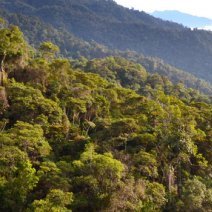The build-up of the present-day tropical diversity of tetrapods
Ignacio Quintero, Michael J. Landis, Walter Jetz, Hélène Morlon
Abstract
The extraordinary number of species in the tropics when compared to the extra-tropics is probably the most prominent and consistent pattern in biogeography, suggesting that overarching processes regulate this diversity gradient. A major challenge to characterizing which processes are at play relies on quantifying how the frequency and determinants of tropical and extra-tropical speciation, extinction, and dispersal events shaped evolutionary radiations. We address this question by developing and applying spatiotemporal phylogenetic and paleontological models of diversification for tetrapod species incorporating paleoenvironmental variation. Our phylogenetic model results show that area, energy, or species richness did not uniformly affect speciation rates across tetrapods and dispute expectations of a latitudinal gradient in speciation rates. Instead, both neontological and fossil evidence coincide in underscoring the role of extra-tropical extinctions and the outflow of tropical species in shaping biodiversity. These diversification dynamics accurately predict present-day levels of species richness across latitudes and uncover temporal idiosyncrasies but spatial generality across the major tetrapod radiations.
Proc Natl Acad Sci U S A. 2023 May 16 ; 120(20):e2220672120. doi : 10.1073/pnas.2220672120


